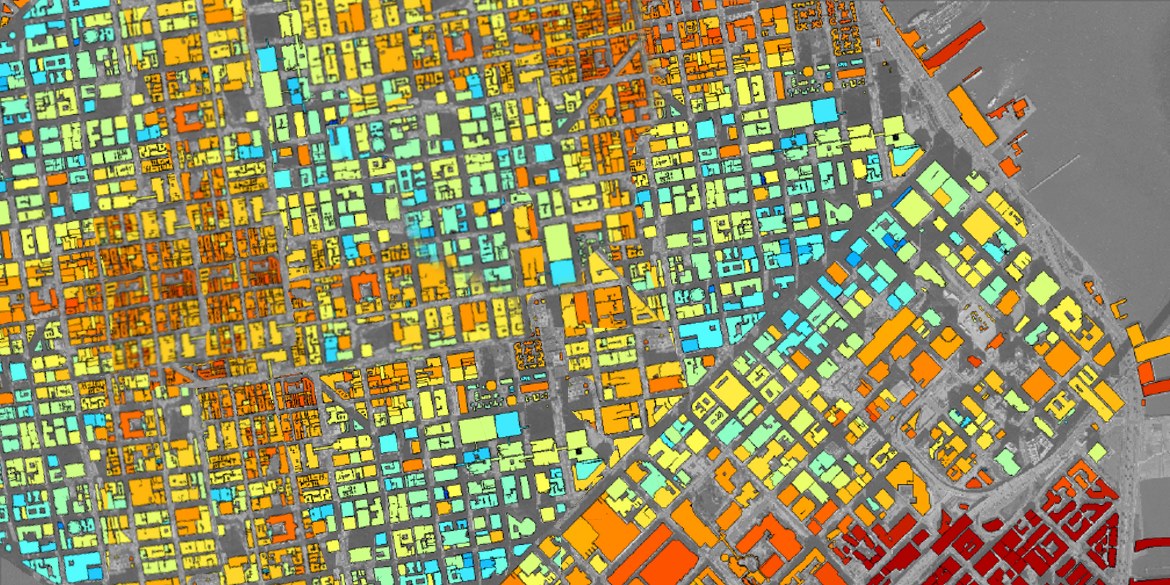Eight months ago, Clean Power Research and the Sacramento Municipal Utility District (SMUD) formed a unique partnership to solve the critical challenge of planning for DER adoption. In the words of our partners at SMUD, this new DER planning software—called WattPlan® Grid—is needed to “address a gap in the integrated planning ecosystem by providing scenario-driven insights and forecasts into the growth of customer adopted DER technologies.”
The growth of DERs such as rooftop solar, electric vehicles (EVs), smart thermostats and battery storage leads to big changes in customer energy patterns and substantial grid impacts. For example, rooftop solar allows customers to feed energy back to a grid designed for one-way flow, and battery storage allows customers to shift 45% or more of their energy use whenever they choose simply by using their cell phone1. These are just a few of the many DER scenarios utilities are grappling with. Proper planning for changes such as these allows utilities to “keep the lights on” at a reasonable price.
SMUD Chief Grid Strategy and Operations Officer Paul Lau sums this up nicely: “The ability to forecast customer DER adoption quickly using consistent and accurate methods through a variety of planning scenarios allows us to more effectively plan for and manage our grid over the long term, and that helps us continue to deliver affordable, reliable electricity to our residential and business customers.”
DERs can also help the grid. When batteries are discharged during peak-load times, and EVs are charged during low-load times, for example, the grid can benefit. This is the idea behind the “non-wires alternatives” concept you keep hearing about: power providers consider alternative means of meeting grid needs without investing in traditional infrastructure such as a new capacitor bank or new distribution lines.
To borrow another quote from Paul Lau, “WattPlan Grid will help us determine how best to maximize the benefits of DER investments in our community.”
Shortcomings of current DER adoption planning methods: stories from our customers
To plan for DER adoption, utilities need fast and repeatable methods, they need to consider all DERs (interdependently), and they need customer-level results. Some approaches to DER planning address one or two of these requirements. Most approaches to DER planning address none.
Fast and repeatable
To plan for DERs today, most utilities rely heavily on subject matter experts with spreadsheets and one-time consulting studies. It can take months to analyze just a handful of scenarios, which is unacceptable given how quickly the outlook for DERs can change. Not to mention the fact that consulting studies are static: In a few months when circumstances change (like when a new solar tariff is implemented), the results are out of date and can’t be refreshed.
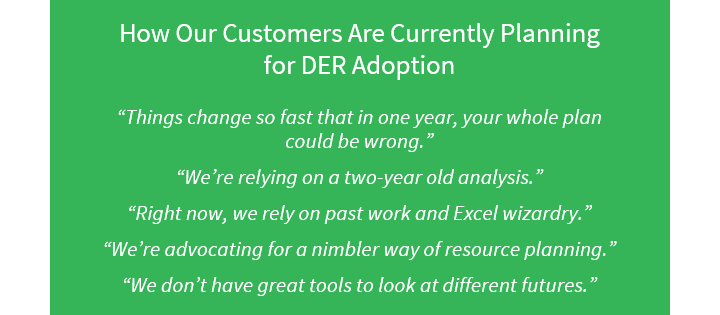
Using WattPlan Grid, utilities will have access to a UI that allows them to define a variety of scenarios, and update forecasts over and over again in a matter of days. Scenario changes may be items such as:
- A new rate plan
- Changing solar panel efficiency
- A new EV incentive
- Changing battery storage prices
Multi-DER (interdependently)
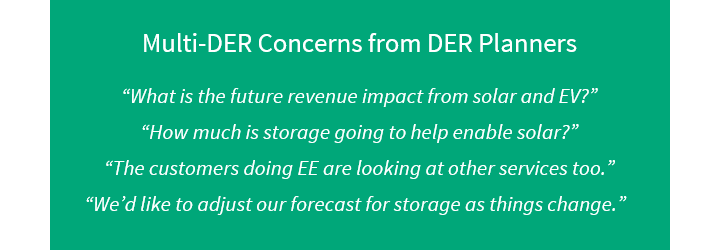
Our utility customers say that rooftop solar, EVs and battery storage are at the top of their list for planning. These technologies tend to have the greatest potential grid impact and the greatest level of uncertainty in terms of which customers will purchase these technologies and how they will operate them:
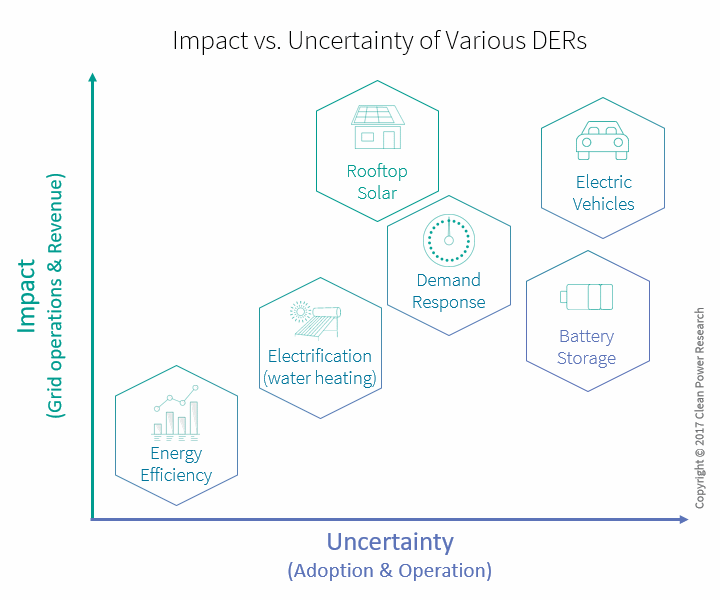 But forecasting the adoption of rooftop solar, EVs and battery storage isn’t enough. There are interdependencies between DER technologies. For instance, if a customer buys energy efficient appliances, that will affect the size of the solar system that is right for them. And if a customer switches to a heat pump water heater, that will affect whether or not battery storage is right for them. Despite this, almost all utility plans consider these technologies in a vacuum.
But forecasting the adoption of rooftop solar, EVs and battery storage isn’t enough. There are interdependencies between DER technologies. For instance, if a customer buys energy efficient appliances, that will affect the size of the solar system that is right for them. And if a customer switches to a heat pump water heater, that will affect whether or not battery storage is right for them. Despite this, almost all utility plans consider these technologies in a vacuum.
WattPlan Grid will have the flexibility to forecast load and revenue impacts of a variety of DER technologies such as rooftop solar, EVs, battery storage, demand response and energy efficiency.
Customer-level
Consider the challenge faced by a distribution engineer. Distribution engineers need to ensure the reliability of equipment on the distribution grid. The transformer that connects your home to the grid is largely impacted by you and 2-4 of your neighbors. The distribution engineer responsible for that transformer needs to understand the behavior of those specific 2-4 customers plus you in order to ensure the reliability of that transformer.
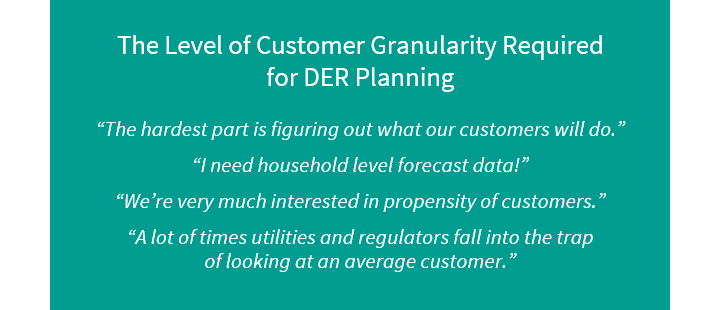
Customer program managers are another example of utility personnel that need access to customer-level data. Customer-level insights are required to maximize the effectiveness of programs. For example, if a utility has an incentive program for EV charging stations, they will want to focus their outreach on customers most likely to purchase an EV. Since we know that customers that are prime candidates for rooftop solar are also likely to purchase an EV, this would be a good demographic to target for the EV charging program.
WattPlan Grid takes a bottom-up approach to forecasting adoption, which gives the likes of distribution engineers and customer program planners customer-level adoption details like rooftop PV specs based on LiDAR data, and propensity-to-adopt scoring.
What’s your story?
WattPlan Grid is putting repeatable, customer-level, multi-DER planning software in the hands of everyone at the utility:
- DER planners and strategists
- Resource planners
- Distribution planners
- Rate analysts
- Customer program managers
Every role at every utility has a unique story to tell about their challenges with DERs and planning for adoption. If you’re ready for a solution that understands your challenges and addresses them, contact us to learn more about WattPlan Grid.
1 Based on average residential electricity usage of 30 kWh/day, and Powerwall capacity of 13.5 kWh.
